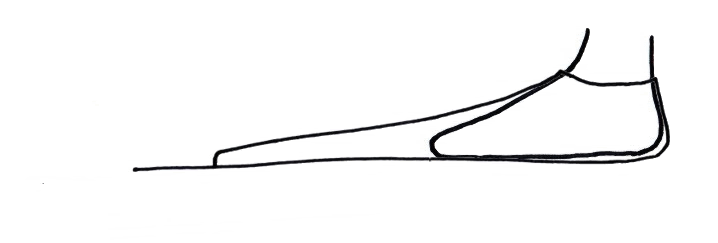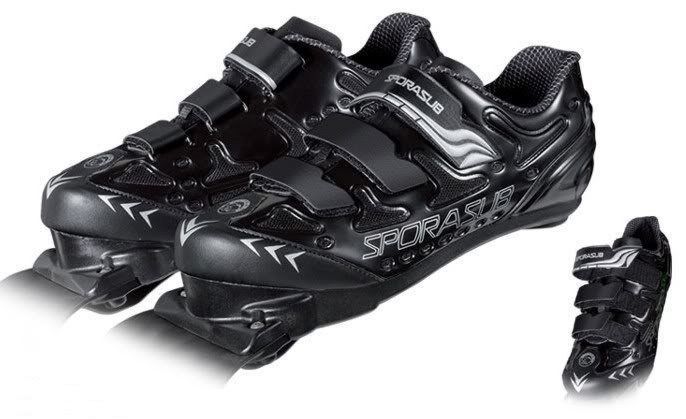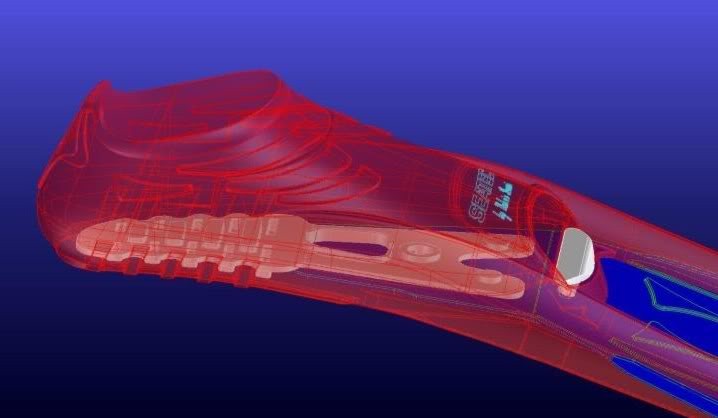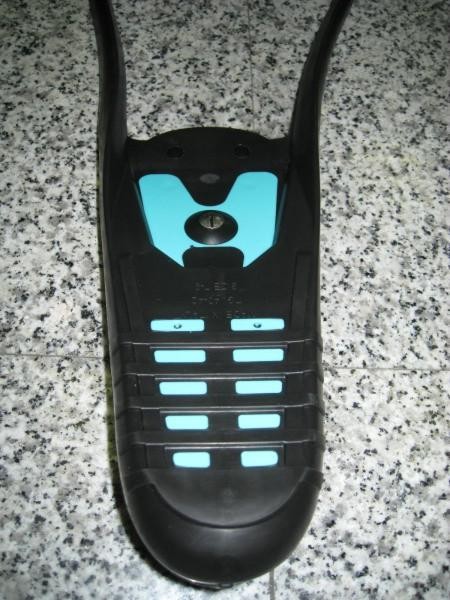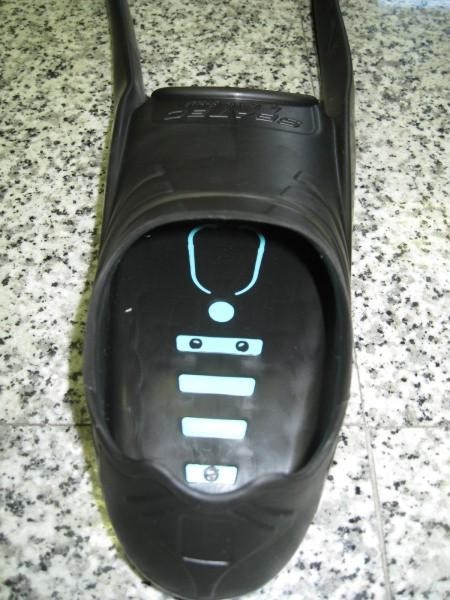I get to see a lot of different foot pockets because people bring me theirs to install carbon blades into. I'm always searching for an ideal foot pocket and I've come pretty close for myself. But it's still important for me to know how other foot pockets measure up against each other, to be able to recommend them to guys with a different foot than mine. Following are some points about foot pockets that I learned to pay attention to.
1. Fit.
This is the most individual factor because it depends on the user's foot size and shape. Here is where opinions on what's best will differ but there's one thing that's common to all; you want the f/p to fit as closely, all around, to your foot (or the sock that you're using) as possible. If the f/p is loose there's a lag in the transfer of energy to the blade and the fin will be softer (provide less propulsion) overall. It looks like this, at the 2nd stage of this cycle you still haven't transferred any energy to the blade.
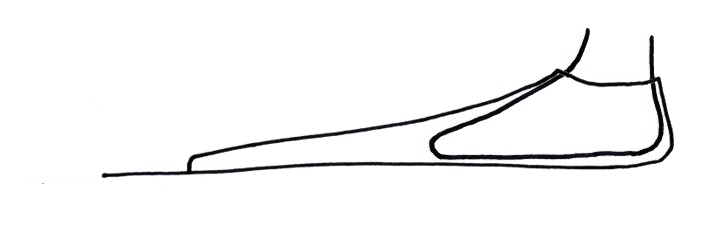
2. Top Softness.
This is pretty straight forward. Too hard a rubber on the top is uncomfortable, and hard to get your foot into.
3. Tendon stiffness.
How much stiffness do the tendons add to the blade to make up the final fin stiffness. This is negotiable as stiffer tendons can be combined with a softer blade to produce an overall correct stiffness for you. But in general moderate stiffness tendons are preferred ie. not to be so stiff and interfere with the flexing of the blade, but stiff enough to give it support, at the same time channelling water away from the foot and helping stabilize the fin.
4. Weight.
How heavy the foot pocket is. Generally people prefer as light a foot pocket as possible. Old style foot pockets like Picasso made of natural rubber are heavy. Modern foot pockets made of synthetic material like OMER Stingray are significantly lighter. On the flip side natural rubber foot pockets are more durable.
5. Bottom stiffness.
This is the most overlooked aspect of foot pockets. If the bottom is too soft it will allow the back edge of the blade to push up through it, causing a lag in the transfer of energy to the blade. It will be overall the same affect as with #1 a loosely fitting foot pocket.
